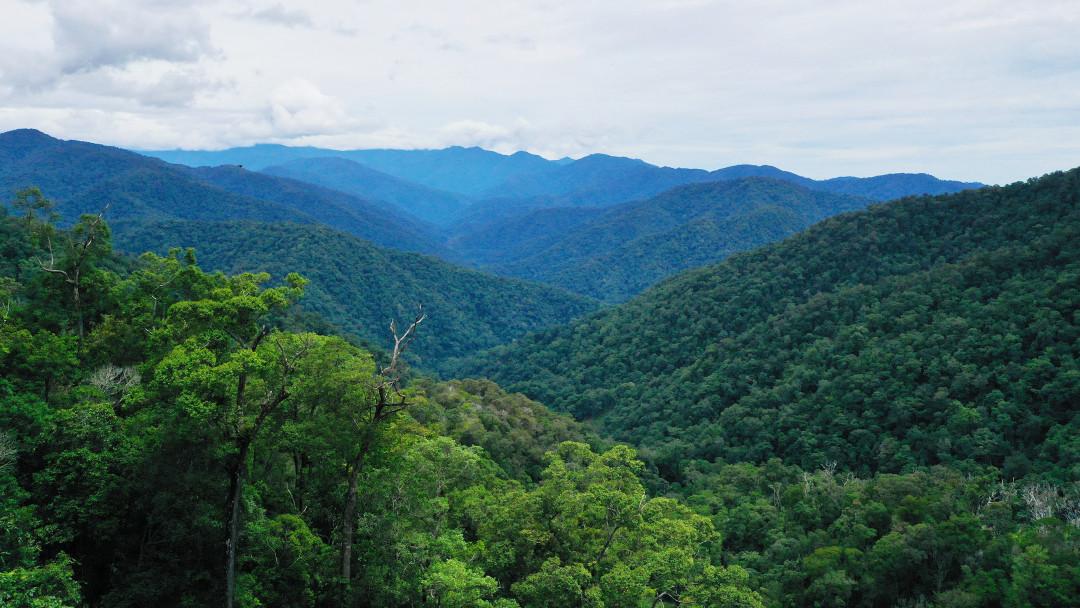Biodiversity
An assessment of the state of nature and biodiversity funding heading into 2023
Natalya Yakusheva Jarlebring
Jan 04, 2023
Updated over 1 year ago
3 min read

Leuser rainforest
© HAKA– FOREST, NATURE, AND ENVIRONMENT OF ACEH
As the first post-pandemic year, 2022 has been marked by, among other things, a return of in-person international events, several of which put biodiversity in the spotlight, including the Stockholm +50 conference, UNFCCC COP27, CITES COP19, and CBD COP15. The latter is expected to become a turning point in striking a deal on the Post-2020 Global Biodiversity Framework that could lead the way in halting biodiversity loss and the destruction of nature. The COP15 negotiations have been referred to by many as the “Paris moment” for biodiversity, highlighting a need to agree on an ambitious, measurable global goal for nature and biodiversity, similar to climate.
COP15
The background to the COP15 negotiations was marked by the dire state of nature and biodiversity, with more and more studies reporting a catastrophic loss of species and nature. In the landmark Living Planet report released by WWF, this year’s authors acknowledge a 69% decline in species populations since the 1970s. The IUCN Red List assessment that provides comprehensive insights on the state of the world’s biodiversity demonstrates that about 30% of all identified species are threatened with extinction, with particular concerns raised over the loss of insect populations and corals. According to the latest IPBES Global Assessment report, there are five major drivers of nature and biodiversity loss: changes in land and sea use, overexploitation of natural resources, climate change, pollution, and invasive species. If we are to halt biodiversity loss, these drivers need to be urgently addressed.
Among many actions and policy changes, this implies closing an enormous funding gap where estimates suggest that an additional 700 billion USD is required annually to bridge this gap. The current estimates of global funding for biodiversity differ greatly depending on which sources are included. The OECD report released in preparation for the COP15 negotiations in 2020 suggests the most comprehensive estimate at USD 78 - 91 billion per year (2015-2017 average). Most of this funding comes from public expenditure domestically at about USD 67.8 billion per year and internationally at about USD 3.9 - 9.3 billion per year. In contrast, the total estimate of private expenditure on biodiversity includes only between USD 6.6 - 13.6 billion per year.
The deal negotiated on the “Kunming-Montreal Global Biodiversity Framework” (GBF) reflects these funding controversies very well. The key agreed targets are in line with ambitious calls and include the protection of 30% of Earth’s lands, oceans, coastal areas, and inland waters by 2030, cutting global food waste by half, restoring at least 30% of degraded terrestrial, inland waters, and coastal and marine ecosystems, and preventing the introduction of invasive alien species. However, the funding commitments to date do not fully reflect the cost of the required actions and calls from developing countries to raise the funding to at least US$ 100 billion per year. The GBF-proposed solutions for closing the funding gap include raising the financial flow from developed to developing countries to at least US$ 20 billion per year, reforming environmentally damaging subsidies, creating a mechanism for sharing profits from biodiversity resources, and finally, mobilizing at least $200 billion per year in domestic and international biodiversity-related funding from all sources – public and private - by 2030.
The demands and the role of the private sector in mobilizing funding for biodiversity have been at the center of COP15 during the dedicated Finance and Biodiversity Day. Questions discussed include transforming regulatory frameworks to shift financial flows towards including biodiversity consideration, exploring the potential of biodiversity credits to move beyond private philanthropic funding to biodiversity, and many others.
It is clear, however, that if we are to act upon and reach these ambitious goals to halt wildlife extinction, many actions, policies, and behavioral changes from all sectors are needed. It is not either/or solutions for governments and companies; it is about acting now. The demand for action from the corporate sector will undoubtedly increase in line with an adopted target to monitor, assess, and transparently disclose their risks, dependencies, and impacts on biodiversity through their operations, supply and value chains, and portfolios. For companies, this means not only closely monitoring and disclosing their biodiversity impact but also mitigating, remediating, and investing in nature to halt biodiversity loss and increase the abundance of native wild species to healthy and resilient levels within and beyond their value chain in line with global goals.
Milkywire’s Impact Funds are designed to respond to these calls to action and help companies become nature positive. Our five funds: Wildlife, Oceans, Climate, Environmental Defenders, and Forests & Landscapes, provide a wide range of solutions for conserving and restoring various ecosystems and enhancing the biodiversity they harbor.
We work to establish long-lasting partnerships with organizations that work with environmental problems at various levels and scales to deliver the different types of solutions needed to halt biodiversity and nature loss. These organizations provide a wide range of solutions, including hands-on conservation and community actions, supporting applied research, and initiatives engaging in strategic policy dialogues to advocate for nature and people’s rights. We set priorities and select the most pressing issues with a group of scientific and community experts.
Further reading on the “Paris moment” for biodiversity:
https://www.iisd.org/articles/deep-dive/biodiversity-climate-nexus-cop-15
https://ec.europa.eu/commission/presscorner/detail/en/ip_22_7538
Ready to make real impact?
Discover how our innovative portfolios can elevate your commitment to global sustainability. Partner with us to make a lasting impact.
Join our newsletter and be the first to know about the exciting progress in our portfolios, expert insights, and the latest updates from our platform.